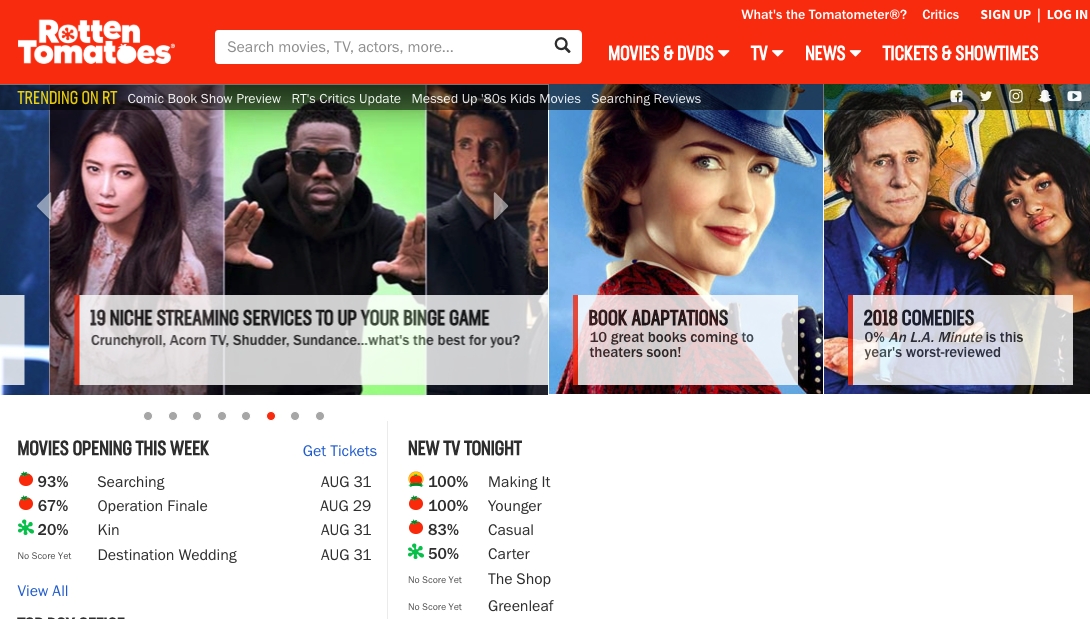
Look, I won’t insult your intelligence: you’re reading this article on UPROXX, so you’re well aware of ubiquitous reviews aggregation website Rotten Tomatoes. The aggregator is so embedded in the zeitgeist at this point that “Rotten Tomatoes approved” stickers and emblems adorn movie posters, advertising materials, and DVD and Blu-Ray releases.
For all of its ease of how-good-is-this-movie-according-to-critics-at-a-glance concept and execution, the methodology behind Rotten Tomatoes has not escaped its share of criticisms over the years, but the website is attempting to address several of those issues as part of the sweeping changes it is undergoing.
RT announced on Tuesday that it is shifting its aggregation focus to lean more heavily on individuals over outlets, and to seek a much broader and more diverse base of critics. Real, human critics. The Fandango-owned site will add hundreds of critics to its aggregation pool, raising its underrepresented demographics (notably women and people of color) by a minimum of 20 percent, as previously announced at Sundance and TIFF. Prior to this change, women accounted for 22 percent of the approved critics, while people of color accounted for just 18 percent of the pool. In addition, Rotten Tomatoes intends to launch a demographics study, and to launch an initiative to help critics attend film festivals if they otherwise lack the means.
Some of these new critics will come from new platforms, including non-traditional media formats like critics who deliver podcast and online video reviews of movies. While not every podcast will constitute inclusion in the aggregation pool, it’s certainly a solid means of attempting to combat the stodgy arms-length image of “film critic” that leaves many movie fans turned off.
You can find more details and a lot further explanations of the new system and criteria over at Rotten Tomatoes.






